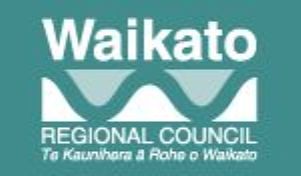Waikato Regional rates paid by Ragalan ratepayers are will go up by 0.4% in the coming year. The media release from the Waikato Regional Council follows:
 Plan for shaping Waikato’s future agreed
Plan for shaping Waikato’s future agreed
The 10-year plan for shaping the future of the Waikato region will be delivered on a rates revenue rise of just 0.4 per cent in 2015/16.
The decision follows two days of deliberations by Waikato Regional Council on more than 430 submissions made on its 2015-2025 Long Term Plan, released for public feedback in March.
“Our council has focused on strategic investments that will strengthen our region’s future,” chairperson Paula Southgate said.
“It’s an excellent result to be able to produce this work plan on just a 0.4 per cent increase in rates revenue from existing ratepayers in the first year.
“We’ve got a strong focus through our plan to improve water quality, protect our coastal marine areas, restore biodiversity, and encourage regional development.
“In making our decisions we’ve looked for opportunities to partner with other community, local and central government organisations to deliver the best outcomes for people now and into the future.
“The reason why we’re able to achieve so much at little additional cost to ratepayers is due to the $1.6 million in operational savings achieved by staff,” Cr Southgate said.
Chief executive Vaughan Payne said: “Staff have worked hard over the last 18 months to align the organisational structure and work programmes to support council in its new strategic direction and five priorities.
“Some tough decisions have been made along the way. The net benefit is that the council has been able to deliver a long term plan that is prudent yet responsive to the key issues and opportunities facing the Waikato,” Mr Payne said.
The works programme for 2015/16 will be delivered on a rates revenue of $80.275 million. There will be a 0.3 per cent drop in rates revenue from existing ratepayers in 2016/17, with a rise of 1 per cent in 2017/18.
The actual rates increase for individual properties will vary depending on where people live and the services they receive.
Key decisions over the past two days include:
- A fund will be established to support projects of regional-scale and with intergenerational benefit. Over the plan’s 10 years it’s expected almost $26 million would be available to inject into regional-scale projects. It will be funded by way of returns from the investment fund, after subsidising rates and allowing for inflation-proofing. However, the rates subsidy is set to be phased out over the next 10 years. This will have no impact on rates though, as it will be offset by efficiency savings built into the budget.
- Funding of $350,000 was approved to implement the Waikato Mayoral Forum’s economic development strategy.
- The council will collect the rate on behalf of TBfree New Zealand for its vector control work in the region for just one more year at a reduced amount of $500,000. The rate collection will continue for 2015/16 based on a commitment from TBfree New Zealand that it will finalise its alternative funding arrangements in the next 12 months.
- The uniform annual general charge (UAGC) will increase from 15 per cent to 18 per cent of rates revenue, as outlined in the council’s consultation document. This means the flat rate for all properties in the region will increase by $15.27 per annum, offset by a reduction in the general rate which will vary depending on the value of individual properties.
- Funding through the Natural Heritage Rate of $300,000+GST per annum for three years has been approved for Maungatautari Ecological Island Trust, subject to an accountability framework being approved by the council.
- Based on submissions, the council agreed to increase funding for clean heat in Tokoroa to a maximum of $170,000, subject to it being matched by South Waikato District Council. The council also passed a motion to work with South Waikato District Council to establish a partnership agreement in order to progress air quality management in Tokoroa by the end of 2015.
“Through submissions, we also had a number of requests from different volunteer organisations in our region, such as Surf Life Saving NZ and Coastguard. In response, we’ve resolved to consult the public next year on whether to establish a regional contestable fund for voluntary emergency services,” Cr Southgate said.
The 2015-2025 Long Term Plan is due to be adopted by the council at its meeting at the end of June.
